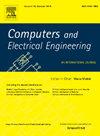More diversity, less redundancy: Feature refinement network for few-shot SAR image classification
IF 4
3区 计算机科学
Q1 COMPUTER SCIENCE, HARDWARE & ARCHITECTURE
引用次数: 0
Abstract
Few-shot SAR image classification predicts new labels on SAR (synthetic aperture radar) images using only a few labeled samples. Due to the insufficient training data in few-shot learning, modern methods tend to extract as many features as possible, which ignore the redundancy caused by increasing features. In this paper, we observe that it is important to maintain a balance between the abundance and scarcity of features through feature refinement. Building on this insight, we proposed a Feature Refinement network for few-shot SAR image classification (FRSAR). FRSAR is a novel approach for feature balance through feature refinement, which consists of enrich feature extraction (EFE) block, redundant feature refinement (RFR) block, and key feature localization (KFL) block. The EFE block extracts complementary features to achieve a richer feature representation. The RFR block filters out redundant features through a two-stage reconstruction process. The KFL block further refines the classification features by adaptive computing thresholds. Extensive experiments on MSTAR dataset demonstrate that our FRSAR method can achieve better performance than other methods. For example, our method surpasses existing the state-of-the-art method by a large margin (+7.20/% on the 5-way 1-shot task and +7.22% on the 5-way 5-shot task). We believe the feature refinement framework can serve as a strong baseline for further research in wider communities.
求助全文
约1分钟内获得全文
求助全文
来源期刊

Computers & Electrical Engineering
工程技术-工程:电子与电气
CiteScore
9.20
自引率
7.00%
发文量
661
审稿时长
47 days
期刊介绍:
The impact of computers has nowhere been more revolutionary than in electrical engineering. The design, analysis, and operation of electrical and electronic systems are now dominated by computers, a transformation that has been motivated by the natural ease of interface between computers and electrical systems, and the promise of spectacular improvements in speed and efficiency.
Published since 1973, Computers & Electrical Engineering provides rapid publication of topical research into the integration of computer technology and computational techniques with electrical and electronic systems. The journal publishes papers featuring novel implementations of computers and computational techniques in areas like signal and image processing, high-performance computing, parallel processing, and communications. Special attention will be paid to papers describing innovative architectures, algorithms, and software tools.
 求助内容:
求助内容: 应助结果提醒方式:
应助结果提醒方式:


